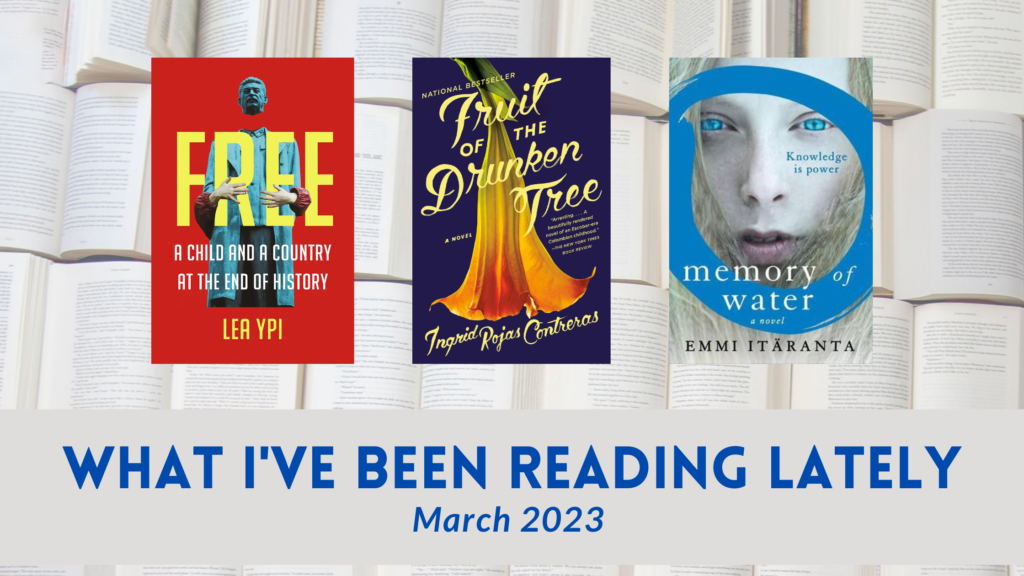Welcome to another round of “What I’ve Been Reading Lately”. My summer reading is off to a very satisfying start. A highlight of summers at home is returning home from work in time to sit outside reading in the afternoon sun.
I am primarily focused on our summer reading challenge at work. My plan is to complete all 25 prompts, but I’ll be double- (and occasionally triple-) dipping in order to do so. I’m trying to find books that check off prompts for my other reading challenges as well but not with as much success as I was hoping. I am, however, reading many unread Book of the Month selections that have accumulated over time which is very gratifying.
On the horizon is a trip to Norway to spend time with family. I look forward to long plane rides and long days with lots of downtime (rainy days inside or sunny days outside, it doesn’t matter) to get in long stretches of reading. I also eagerly await the opportunity to browse Norwegian bookstores and add to my collection of Norwegian language books.
How’s your summer reading going?
Take What You Can Carry by Gian Sardar (2021) 🎧
Narrated by Vaneh Assadourian
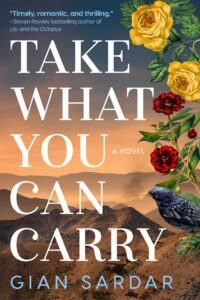 This book takes place in 1979 and is about a Los Angeles woman who joins her boyfriend on a trip to his hometown in the Kurdistan region of Iraq for a family wedding. She’s an aspiring photographer and thinks this trip will provide the perfect opportunity to take the shot that will take her from lowly secretary to respected photojournalist. Also, she wishes to learn about her boyfriend’s childhood to understand him better. However, going to this war torn area of the world is not what she expected. There are certainly beautiful sights and touching experiences, but also frightening and tragic moments. The story is gripping and emotional. I loved learning more about the Kurdish culture and their struggles. The glimpse of Los Angeles in 1979 was also interesting. ⭐️⭐️⭐️⭐️⭐️
This book takes place in 1979 and is about a Los Angeles woman who joins her boyfriend on a trip to his hometown in the Kurdistan region of Iraq for a family wedding. She’s an aspiring photographer and thinks this trip will provide the perfect opportunity to take the shot that will take her from lowly secretary to respected photojournalist. Also, she wishes to learn about her boyfriend’s childhood to understand him better. However, going to this war torn area of the world is not what she expected. There are certainly beautiful sights and touching experiences, but also frightening and tragic moments. The story is gripping and emotional. I loved learning more about the Kurdish culture and their struggles. The glimpse of Los Angeles in 1979 was also interesting. ⭐️⭐️⭐️⭐️⭐️
- Book Voyage: Read Around the World: Middle East (Kurdistan region of Iraq)
- #DiversityAcrossGenres: MENA / Historical Fiction or Romance
- Summer Book Bingo: A place I want to visit
The Rabbit Factor (Rabbit Factor Trilogy #1) by Antti Tuomainen (2020)
Translated from the Finnish by David Hackston (2021) 📖
 This is the first in a trilogy about insurance mathematician, Henri, who lives life based on careful calculations. However, his life is thrown off balance when he suddenly has no job and, at the same time after the death of his brother, finds himself the owner of an adventure park in dire financial troubles and with a great debt to criminals. It was a quirky and somewhat absurd crime fiction. The staff at the park were a motley crew, and Henri found himself in some odd situations. This Finnish author has been on my radar for a while, and learning that Steve Carell has signed to play the main character in an adaptation was intriguing (though no new news in the last couple of years). I can certainly see him playing it! I enjoyed it enough but won’t be reading book #2 anytime soon. Maybe another one by this author instead. ⭐️⭐️⭐️
This is the first in a trilogy about insurance mathematician, Henri, who lives life based on careful calculations. However, his life is thrown off balance when he suddenly has no job and, at the same time after the death of his brother, finds himself the owner of an adventure park in dire financial troubles and with a great debt to criminals. It was a quirky and somewhat absurd crime fiction. The staff at the park were a motley crew, and Henri found himself in some odd situations. This Finnish author has been on my radar for a while, and learning that Steve Carell has signed to play the main character in an adaptation was intriguing (though no new news in the last couple of years). I can certainly see him playing it! I enjoyed it enough but won’t be reading book #2 anytime soon. Maybe another one by this author instead. ⭐️⭐️⭐️
- Nordic Literature Reading Challenge: Finland / Contemporary Literature
- Summer Book Bingo: First book in a series
Hello Beautiful by Ann Napolitano (2023) 🎧📖
Narrated by Maura Tierney
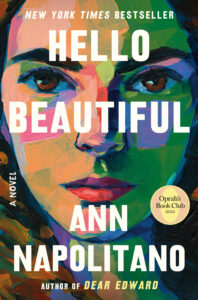 This was a good one. I got totally wrapped up in this family saga about four inseparable sisters — the ambitious Julia, Sylvie the reader and dreamer, the free spirited artist Cecilia, and Emeline caring for them all — and William, the broken man who became a part of their close knit family. There was joy and trauma, love and heartache, a very moving story. And the structure was interesting. Chapters alternated between perspectives of them all (in the third person) but time would overlap a bit so the reader experienced the same event from more than one perspective. Highly recommend. ⭐️⭐️⭐️⭐️⭐️
This was a good one. I got totally wrapped up in this family saga about four inseparable sisters — the ambitious Julia, Sylvie the reader and dreamer, the free spirited artist Cecilia, and Emeline caring for them all — and William, the broken man who became a part of their close knit family. There was joy and trauma, love and heartache, a very moving story. And the structure was interesting. Chapters alternated between perspectives of them all (in the third person) but time would overlap a bit so the reader experienced the same event from more than one perspective. Highly recommend. ⭐️⭐️⭐️⭐️⭐️
- Summer Book Bingo: A book from a celebrity book club (Oprah)
- Read My Own Shelf: Unread BOTM selection
Just for the Summer (Part of Your World, #3) by Abby Jimenez (2024)
Narrated by Christine Lakin and Zachary Webber
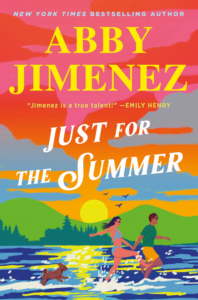 I listened to Yours Truly not long ago and loved it (Reading Lately, April 2024) so I knew I wanted to read this one. However, I was concerned it might not live up to expectations. I need not have worried (though I was a little thrown off at first by the same male narrator for a different character but I got over it). I loved the world of these characters and now want to go back to #1. This is the story of Emma and Justin, both with major parental issues which complicated their plan for a summer fling to break a curse of their exes always ending up with their soulmates. It had humor, heart, and substance. ⭐️⭐️⭐️⭐️⭐️
I listened to Yours Truly not long ago and loved it (Reading Lately, April 2024) so I knew I wanted to read this one. However, I was concerned it might not live up to expectations. I need not have worried (though I was a little thrown off at first by the same male narrator for a different character but I got over it). I loved the world of these characters and now want to go back to #1. This is the story of Emma and Justin, both with major parental issues which complicated their plan for a summer fling to break a curse of their exes always ending up with their soulmates. It had humor, heart, and substance. ⭐️⭐️⭐️⭐️⭐️
- Summer Book Bingo: Takes place during the summer
- Read My Own Shelf: Unread BOTM selection
What have you been reading lately?
Disclaimer: AVikingInLA is a participant in the Amazon Services LLC Associates Program, an affiliate advertising program designed to provide a means for sites to earn advertising fees by advertising and linking to amazon.com.




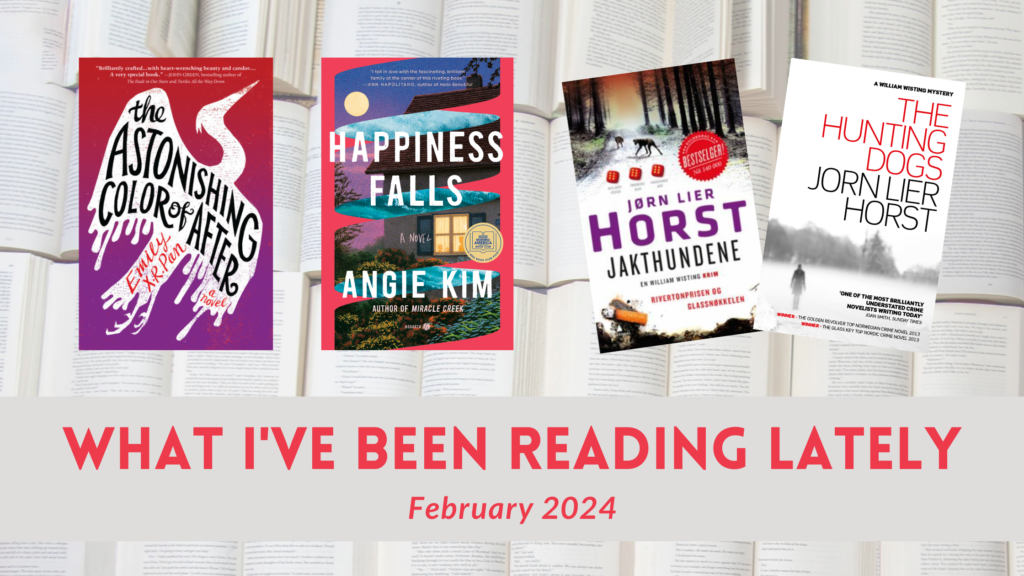

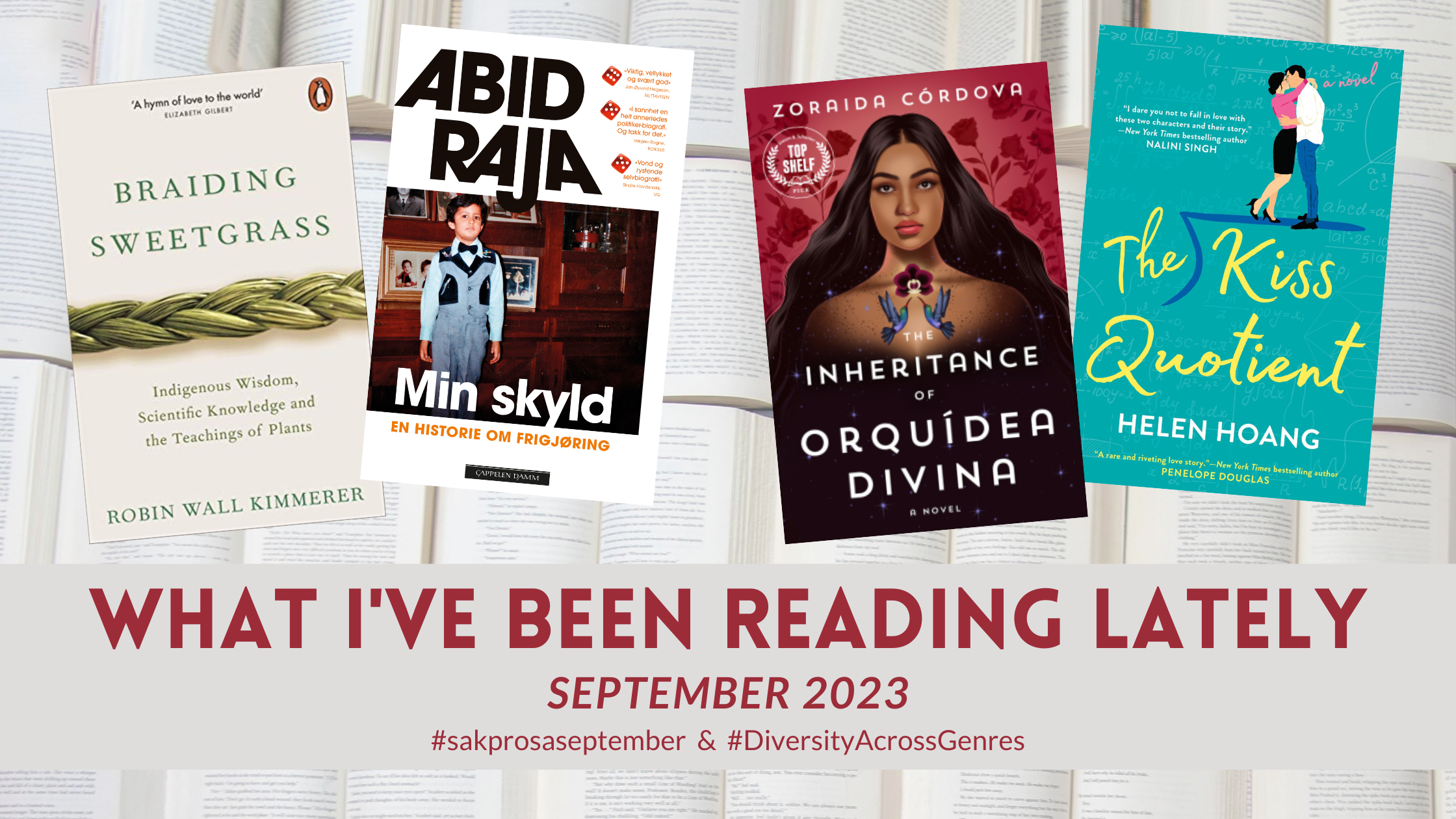
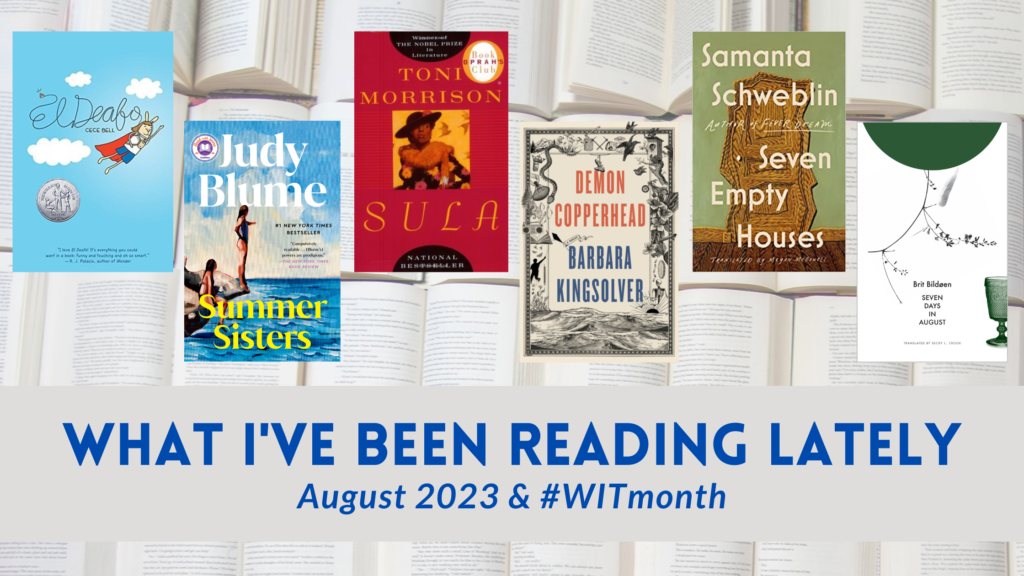
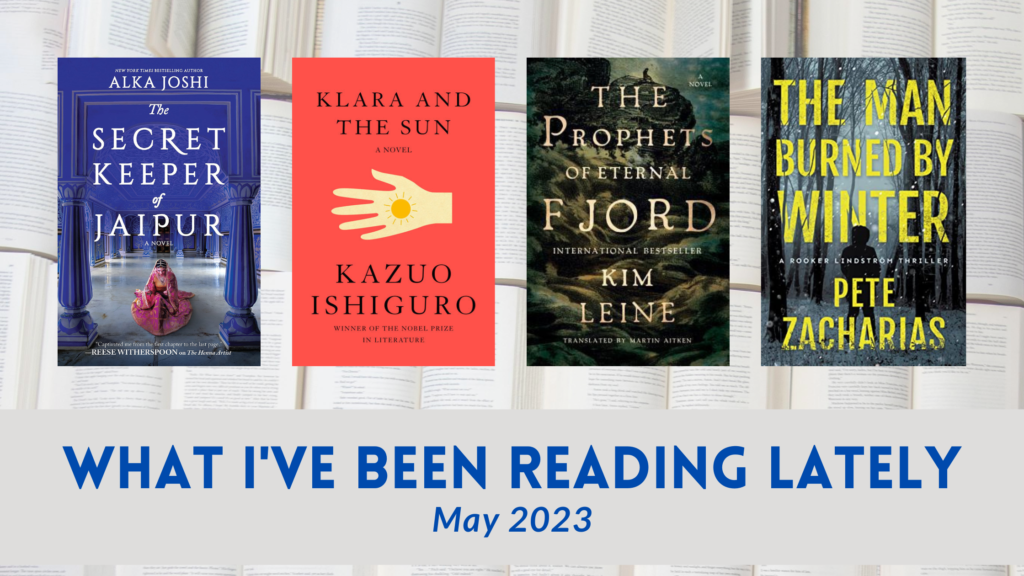

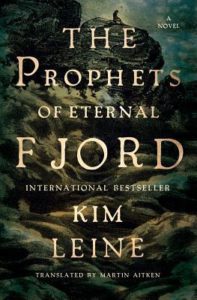 “Kim Leine’s great epic, ‘Profeterne i Evighedsfjorden’, is the story of the Danish priest Morten Falck who travels to Greenland at the end of the 1700s. Through this unfolds the tale of Danish colonisation as a completely crazy and meaningless project. The Danish officials try to keep hold of power and customs but are plagued by homesickness and resignation. Grief and anger smoulders amongst the Greenlanders, and some of them seize Christianity and the European ideas of freedom as an inspiration for rebellion against colonial power. But as well as being a critical, historical novel that reminds us of Denmark’s problematic past as a colonial power, the book is also a depiction of dirt as mankind’s basic element.”
“Kim Leine’s great epic, ‘Profeterne i Evighedsfjorden’, is the story of the Danish priest Morten Falck who travels to Greenland at the end of the 1700s. Through this unfolds the tale of Danish colonisation as a completely crazy and meaningless project. The Danish officials try to keep hold of power and customs but are plagued by homesickness and resignation. Grief and anger smoulders amongst the Greenlanders, and some of them seize Christianity and the European ideas of freedom as an inspiration for rebellion against colonial power. But as well as being a critical, historical novel that reminds us of Denmark’s problematic past as a colonial power, the book is also a depiction of dirt as mankind’s basic element.”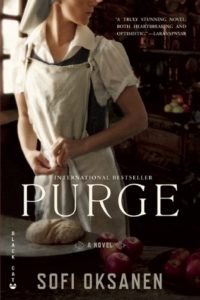 “Her [Sofi Oksanen’s] third novel, Purge, is about the Soviet occupation of Estonia and its consequences. Unfortunately, it is also very much of current interest with its stories about human trafficking around the Baltic. The book’s two time levels are 1992 – one year after Estonia won its independence – and the 1940s – when tens of thousands of Estonians were deported to Siberia and agriculture was collectivised. On a summer morning in 1992, old Aliide Truu finds an exhausted and confused young woman in her vegetable garden. This Zara has been tricked away from her home in Vladivostok to work as a sex worker in Berlin. On the way to Tallinn where she was supposed to start selling her body to Finnish sex tourists, she manages to escape.”
“Her [Sofi Oksanen’s] third novel, Purge, is about the Soviet occupation of Estonia and its consequences. Unfortunately, it is also very much of current interest with its stories about human trafficking around the Baltic. The book’s two time levels are 1992 – one year after Estonia won its independence – and the 1940s – when tens of thousands of Estonians were deported to Siberia and agriculture was collectivised. On a summer morning in 1992, old Aliide Truu finds an exhausted and confused young woman in her vegetable garden. This Zara has been tricked away from her home in Vladivostok to work as a sex worker in Berlin. On the way to Tallinn where she was supposed to start selling her body to Finnish sex tourists, she manages to escape.”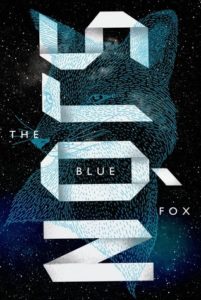 “The Blue Fox is a novel about an Icelandic pastor and a fox hunt. Sjón makes use of the Icelandic folktale to tell his story. One of the principal characters is the pastor Baldur Skuggason. He has an evil, dark side to his character. Another key figure is the strange offspring of a cat and a fox following the story – Sjón’s style has elements of a very unique Icelandic sense of humour. The Blue Fox is a short novel with a few sections. Some pages only consist of a single written line, surrounded by large white surfaces calling to mind the Icelandic expanse. This concreteness can be said to balance on the line between prose and poetry. ‘Skugga-Baldur’ is also a contemporary novel which brings up some of today’s ethical questions. Are the weak, deformed babies with developmental disorders welcome in a world where they could have been discarded already prior to birth?”
“The Blue Fox is a novel about an Icelandic pastor and a fox hunt. Sjón makes use of the Icelandic folktale to tell his story. One of the principal characters is the pastor Baldur Skuggason. He has an evil, dark side to his character. Another key figure is the strange offspring of a cat and a fox following the story – Sjón’s style has elements of a very unique Icelandic sense of humour. The Blue Fox is a short novel with a few sections. Some pages only consist of a single written line, surrounded by large white surfaces calling to mind the Icelandic expanse. This concreteness can be said to balance on the line between prose and poetry. ‘Skugga-Baldur’ is also a contemporary novel which brings up some of today’s ethical questions. Are the weak, deformed babies with developmental disorders welcome in a world where they could have been discarded already prior to birth?”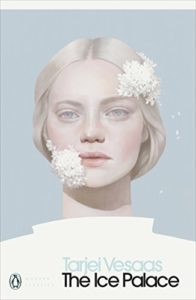 “The Ice Palace is a novel with two 11-year-old girls as the protagonists: extrovert Siss and quiet, introvert Unn. The day after a meeting of the girls at which Unn revealed that she is carrying a dark secret, Unn travels to the ice palace. This is a huge ice formation which builds up at a waterfall in winter-time. As it turns out to be made up of several ice rooms, she walks into the palace. Unn is enthralled by the beauty of the rooms, but in the seventh room she loses her way and cannot find her way out. She freezes to death with Siss’s name on her lips. The novel concludes with the story of Siss’s life and her reaction to Unn’s death. Siss now becomes the quiet and lonely one. She goes into an inner ice palace until she is finally redeemed and can move on into adulthood with a profound insight.”
“The Ice Palace is a novel with two 11-year-old girls as the protagonists: extrovert Siss and quiet, introvert Unn. The day after a meeting of the girls at which Unn revealed that she is carrying a dark secret, Unn travels to the ice palace. This is a huge ice formation which builds up at a waterfall in winter-time. As it turns out to be made up of several ice rooms, she walks into the palace. Unn is enthralled by the beauty of the rooms, but in the seventh room she loses her way and cannot find her way out. She freezes to death with Siss’s name on her lips. The novel concludes with the story of Siss’s life and her reaction to Unn’s death. Siss now becomes the quiet and lonely one. She goes into an inner ice palace until she is finally redeemed and can move on into adulthood with a profound insight.”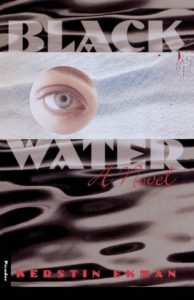 “Blackwater is a detective novel set in the town of Svartvattnet in Norrland. It depicts a woman from Stockholm, who moves in with her boyfriend in the town to work as a teacher in a commune. However, events revolve around a double homicide that remains unsolved and the consequences of this trauma for the people in the town. Kerstin Ekman’s story invites many reading styles; it can be read as a Bildungsroman, as a critical analysis of gender roles, as a mythical story with symbolic elements, but, of course, also simply as a thrilling detective novel.”
“Blackwater is a detective novel set in the town of Svartvattnet in Norrland. It depicts a woman from Stockholm, who moves in with her boyfriend in the town to work as a teacher in a commune. However, events revolve around a double homicide that remains unsolved and the consequences of this trauma for the people in the town. Kerstin Ekman’s story invites many reading styles; it can be read as a Bildungsroman, as a critical analysis of gender roles, as a mythical story with symbolic elements, but, of course, also simply as a thrilling detective novel.”